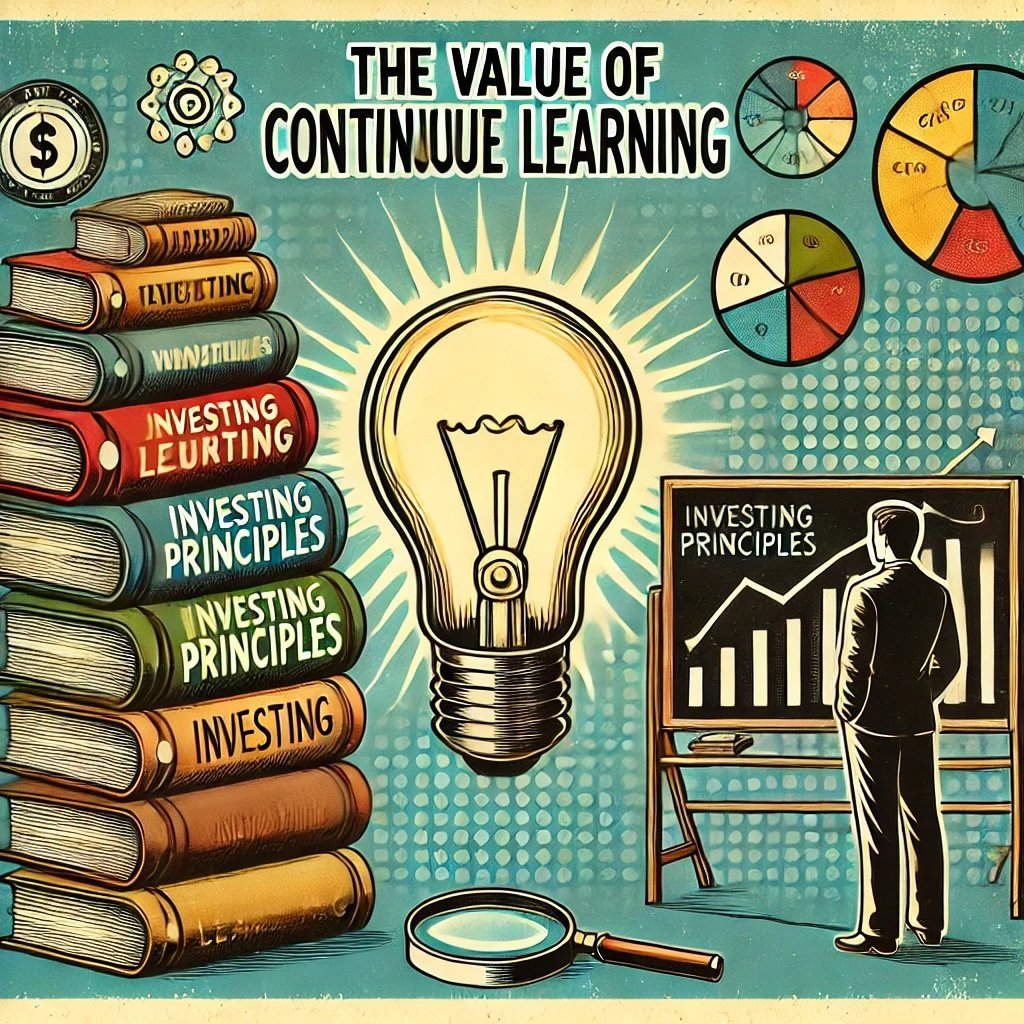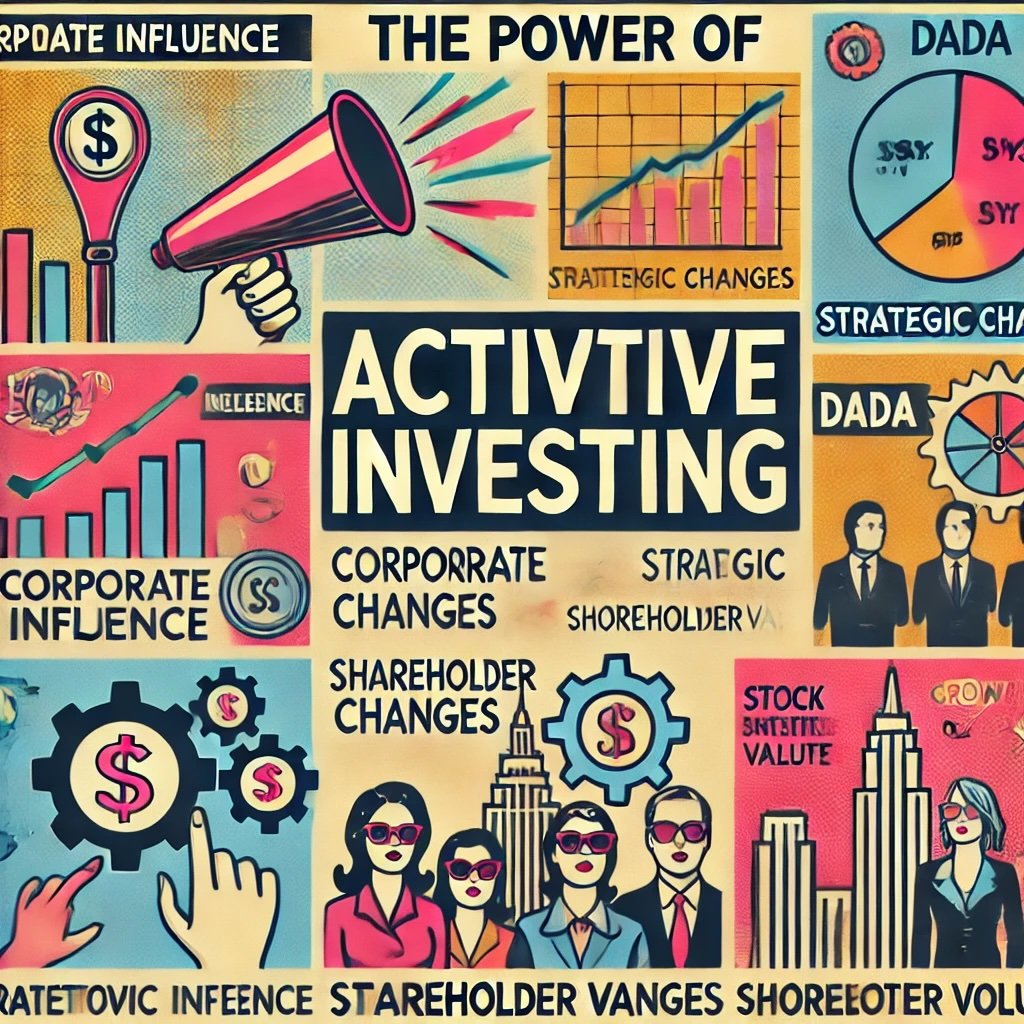In recent years, a transformative life philosophy has been gaining traction – a philosophy that dares to challenge the age-old societal blueprint of long-term employment followed by a belated retirement. This is the Financial Independence, Retire Early (FIRE) movement. It’s not just a financial strategy; it’s a paradigm shift that recalibrates your relationship with money, time, and life itself. At its core, FIRE advocates a lifestyle of intense saving and astute investing with a bold and exciting goal – to amass sufficient wealth for an early retirement, often several decades ahead of the traditional retirement age. It’s a movement inspired by the desire to reclaim your time, freeing you from the routine of a 9-to-5 grind, and opening up a world of opportunities to pursue personal passions, experiences, and self-designed adventures.
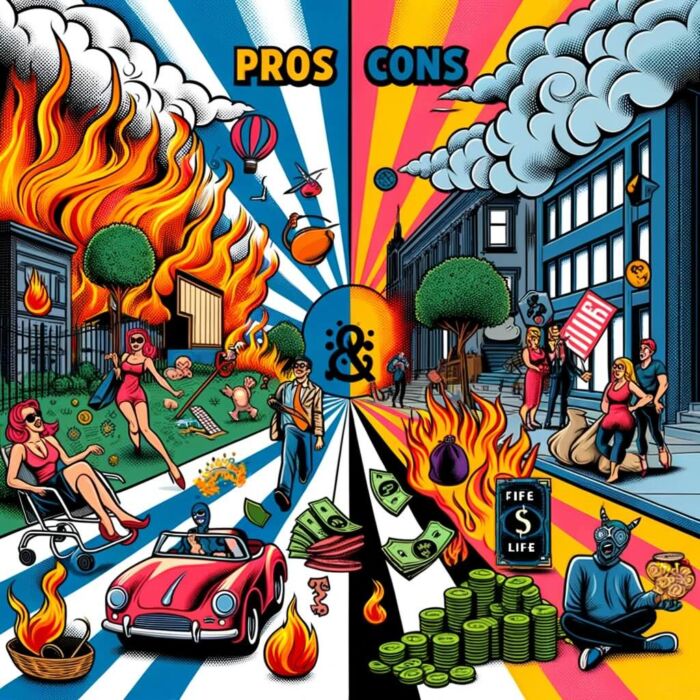
Exploring Pros and Cons of FIRE
However, like any bold life philosophy, the path to FIRE comes bundled with its own unique set of rewards and challenges. It’s a lifestyle that has been both celebrated for its liberating potential and critiqued for its inherent risks and sacrifices. These contrasting perspectives illuminate the multifaceted nature of the FIRE movement and underline the importance of understanding its pros and cons in realistic, practical terms.
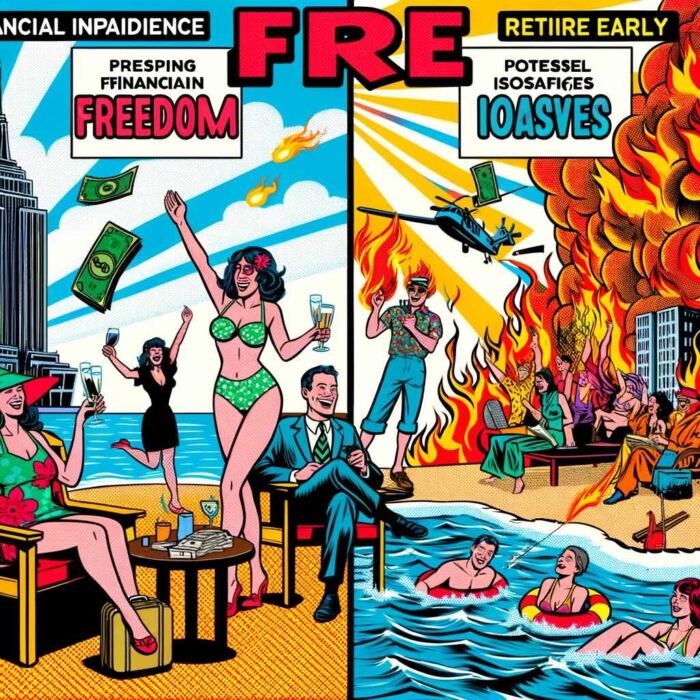
This article aims to serve as your guide, your map to navigating the terrain of the FIRE landscape. Our objective is to present an unbiased and comprehensive exploration of both the advantages and the potential pitfalls associated with this life-altering path. We delve into the heart of the FIRE philosophy, scrutinizing its rewards, unearthing its challenges, and shedding light on the realities of adopting this lifestyle. Our goal is to empower you, the reader, with a nuanced understanding, enabling you to make an informed decision about whether the principles and practices of FIRE align with your personal values, lifestyle preferences, and long-term aspirations.
Whether you’re already at the brink of embracing the FIRE lifestyle, or you’re merely curious and wish to understand what this path entails, we invite you on this enlightening journey. Join us as we dive deep into the world of Financial Independence, Retire Early, uncovering its many layers, and equipping you with the knowledge to chart your own financial destiny.

Understanding Financial Independence Retire Early: Definition of FIRE
At the heart of the Financial Independence, Retire Early (FIRE) movement is the goal to achieve financial freedom in order to have the option to retire early. This doesn’t necessarily mean you must stop working at 30 or 40. Rather, it means accumulating enough wealth so that work becomes optional, and you can choose to spend your time however you wish, whether that’s traveling, picking up new hobbies, volunteering, or even starting your own business.
The concept of FIRE isn’t one-size-fits-all. There are several variations depending on personal preferences and financial situations. Some adopt “LeanFIRE,” where one aspires to retire early on a minimal budget, living frugally. Others pursue “FatFIRE,” aiming for a more luxurious lifestyle in retirement, thus requiring a larger nest egg. “BaristaFIRE” refers to those who’ve saved enough to not rely on full-time, high-stress jobs but choose to continue part-time or flexible work to cover living expenses. Each variant has its unique charm, reflecting the fact that the FIRE journey can be highly individual and customizable.
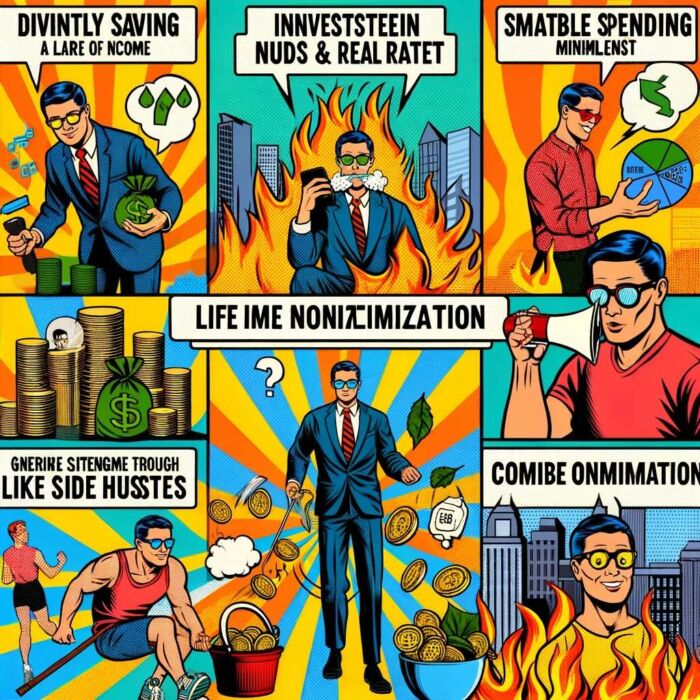
Key Principles and Strategies Associated with FIRE
The principles of FIRE stem from a simple yet powerful formula: earn more, spend less, and invest the difference.
- High Savings Rate: FIRE adherents aim to save and invest a substantial portion of their income, sometimes as high as 50-70%. This is often achieved through a combination of higher earnings and disciplined frugality.
- Smart Investing: The saved money doesn’t just sit in a bank account; it’s invested wisely, often in low-cost, passive index funds, real estate, or other income-generating assets. The goal is to grow the wealth exponentially over time through the magic of compound interest.
- Sustainable Spending: Living a financially sustainable lifestyle is key. This involves mindful budgeting, conscious consumption, and minimizing unnecessary expenses. Some FIRE enthusiasts embrace minimalism or the principles of a circular economy as part of this principle.
- Increasing Income Streams: Many pursuing FIRE focus on diversifying income streams. This could mean negotiating a raise, changing jobs, starting a side hustle, or creating passive income streams.
- Life Optimization: Beyond the financial strategies, FIRE is also about optimizing one’s life for happiness, satisfaction, and well-being. This can involve things like health, fitness, relationships, personal growth, and contributions to the community.
FIRE, then, is not just about money; it’s about creating a life where your time is your own. It’s about reassessing societal norms around work, consumption, and success, challenging you to write your own script. It’s about embracing a journey that leads you to a destination defined by your terms, fueled by your dreams, and shaped by your choices.
source: Pennies Not Perfection on YouTube
Pros of FIRE: Upside of Retiring Early
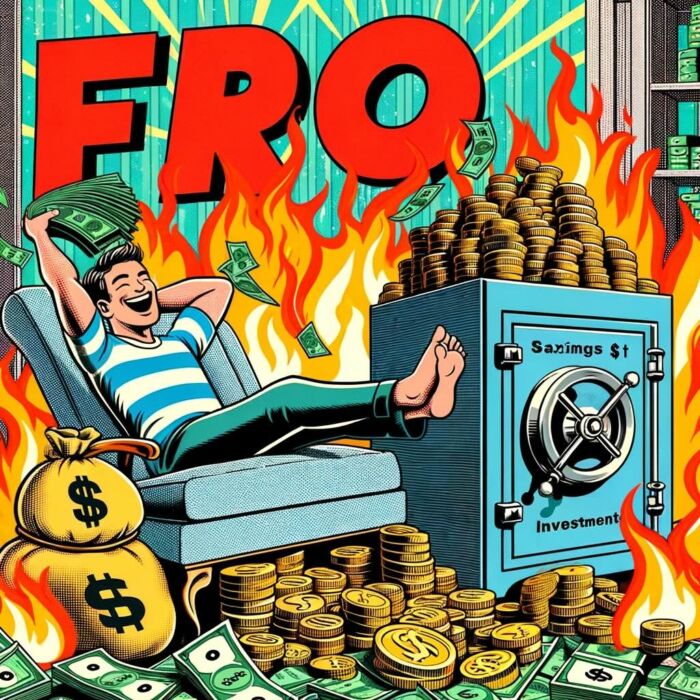
Financial Security
The journey to FIRE is often marked by aggressive saving and disciplined spending. This fiscal responsibility can result in substantial savings and investments, providing a safety net that many people may lack. With a robust financial foundation, you’re better equipped to weather life’s unpredictability, whether it’s a global pandemic, job loss, or personal emergencies. This financial security brings with it a peace of mind, enabling you to live life with fewer money-related worries.
Early Retirement and Freedom to Pursue Passions
One of the most appealing aspects of FIRE is the potential for early retirement. By freeing oneself from the constraints of a traditional 9-to-5 job, you gain a significant amount of time – a valuable, non-renewable resource. This newfound time can be dedicated to pursuing passions, learning new skills, traveling the world, volunteering, or simply enjoying life at a more relaxed pace. For many, this freedom to live life on their own terms is a compelling motivation to embark on the FIRE journey.
Increased Financial Literacy and Discipline
The path to FIRE necessitates a deep understanding of personal finances, investments, and long-term financial planning. As you navigate this path, your financial literacy naturally increases. You’ll find yourself more capable and confident in managing your finances, understanding investment vehicles, and making informed financial decisions. This education and the discipline it fosters are valuable life skills, beneficial regardless of whether you achieve FIRE or not.

Potential for Improved Quality of Life
The tenets of FIRE – frugality, minimalism, and conscious consumption – often lead to an uncluttered, simplified lifestyle that many find liberating. Without the constant chase for material possessions, you can focus on experiences, relationships, and personal growth, often leading to increased satisfaction and an improved quality of life.
Case Studies Demonstrating Benefits of FIRE
There are numerous real-life success stories demonstrating the benefits of FIRE. Take, for instance, the popular blog “Mr. Money Mustache,” where the author shares his journey of retiring at 30 through frugal living and strategic investing. Then there’s “Millennial Revolution,” where a couple in their early thirties quit their jobs to travel the world, funded by their investment portfolio.
Each of these stories serves as a testament to the transformative potential of FIRE. They illustrate how individuals from different walks of life, armed with determination, discipline, and financial prudence, can reshape their destinies, break free from societal expectations, and design a life of their choosing.
source: Chris Invests on YouTube
Cons of FIRE: Downside of Retiring Early
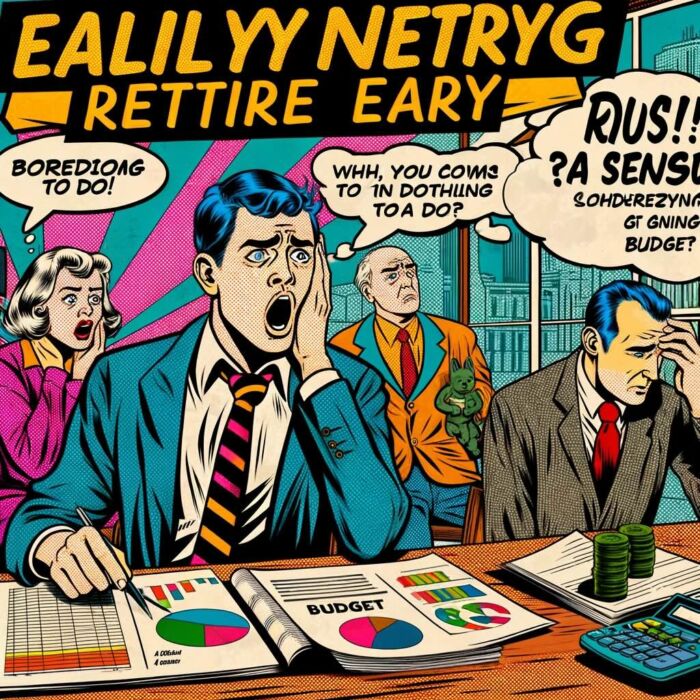
Requires High Savings Rate and Strict Budgeting
FIRE, particularly the LeanFIRE route, often requires an extraordinarily high savings rate, which means strict budgeting and frugality. This could lead to a lifestyle that some might find restrictive or stressful. The relentless focus on saving and investing can cause tension, particularly if you have a partner or family who aren’t on board or if it results in sacrificing experiences you value. Achieving FIRE can sometimes feel like a marathon, and the intense discipline required can lead to frugality fatigue.
Potential Impact on Social Life and Relationships
Given its emphasis on minimalism and frugality, FIRE can sometimes clash with societal norms around consumption and lifestyle. This may affect your social life. For instance, frequently declining invitations to dine out or travel with friends due to budget constraints might strain relationships. Similarly, if your partner isn’t equally committed to the FIRE journey, it could cause conflict.
Uncertainty Due to Market Volatility
FIRE plans often hinge on the performance of investment markets. However, the nature of these markets is inherently volatile. Economic downturns, changes in interest rates, or fluctuations in real estate prices can significantly impact your FIRE timeline and financial security. While diversification and conservative withdrawal rates can mitigate this risk, the uncertainty remains a valid concern.
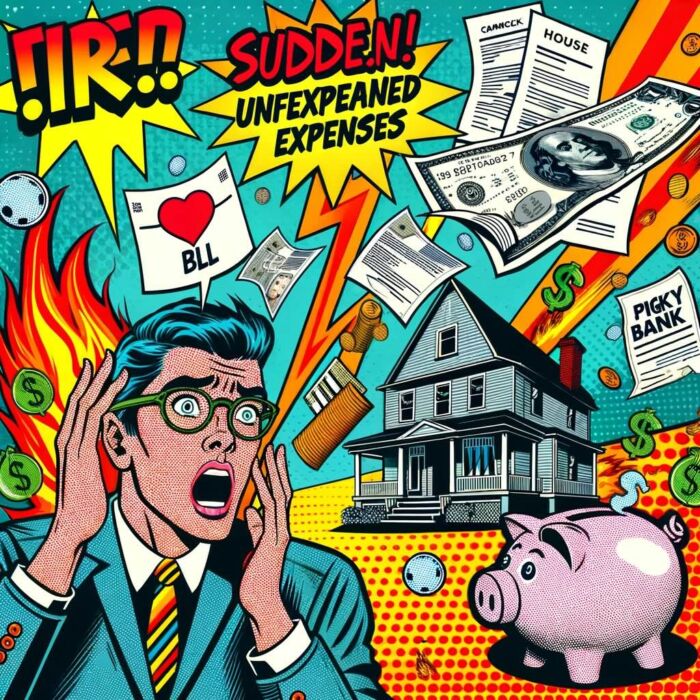
Risk of Unforeseen Expenses
Despite careful planning, life can throw curveballs – a global pandemic, a sudden health issue, unexpected home repairs, or the need to support a family member financially. These unexpected costs can quickly drain reserves and derail your journey to FIRE, particularly if you’re following a LeanFIRE strategy with a smaller safety net.
Case Studies Demonstrating Challenges of FIRE
While there are plenty of success stories, there are also tales of those who have struggled with the FIRE approach. For instance, some people who’ve achieved FIRE have spoken about the psychological adjustment required when transitioning from a life centered around earning and saving to one of living off those savings. Others have talked about feeling isolated from friends or family who couldn’t relate to their lifestyle, or facing the challenge of finding new purpose and identity beyond their careers.
Real-life accounts like these reveal that FIRE isn’t just a financial journey; it’s also an emotional and psychological one. It underscores the importance of considering the potential challenges and crafting a comprehensive, well-rounded plan that addresses not just the financial but also the personal aspects of this path.
source: Invincible Money by Trajan King on YouTube
Balancing the Pros and Cons of Retiring Early

Weighing the Potential Benefits and Drawbacks
Deciding whether the FIRE path is right for you involves carefully weighing its potential benefits and drawbacks. It’s about more than just numbers on a spreadsheet; it requires a deep introspection into your values, lifestyle preferences, and long-term goals.
On the one hand, FIRE offers enticing benefits: the freedom to retire early, the peace of mind that comes with financial security, the opportunity to pursue personal passions, and the chance to live a life designed on your terms.
On the other hand, the journey to FIRE can be a challenging one. It demands discipline, resilience, and sacrifice. It may require you to make tough decisions that can impact your social life, your relationships, and your lifestyle. It’s a path that is not without risk, with market volatility and unforeseen expenses potentially disrupting your plans.
As you weigh these pros and cons, it’s essential to consider not just the end goal – financial independence and early retirement – but also the journey itself. After all, the path to FIRE is often a long one. The lifestyle changes, the sacrifices, the uncertainty – these are factors you will live with for many years. Therefore, it’s important to ensure that the journey aligns with your values, your tolerance for risk, and your definition of a fulfilling life.

Personal Considerations When Deciding If FIRE Is Right for You
Deciding whether to embark on the FIRE journey is an intensely personal decision. Here are some factors to consider:
- Your Financial Goals: What are your long-term financial goals? Are you attracted to the idea of early retirement, or are you more interested in simply having financial security and the flexibility that comes with it?
- Your Lifestyle Preferences: What kind of lifestyle do you envision for yourself, both now and in the future? Can you comfortably embrace frugality, or do you prefer a more luxurious lifestyle?
- Your Risk Tolerance: How do you feel about risk? Can you weather market downturns and potential setbacks on your journey to FIRE?
- Your Social and Family Life: Are your partner, family, or close friends supportive of this lifestyle choice? How might it impact your social interactions?
- Your Motivations and Passions: Beyond financial independence and early retirement, what drives you? What passions might you pursue with your newfound time and freedom?
Considering these questions will help you make an informed decision that aligns with your individual circumstances, values, and aspirations. Remember, FIRE is not a one-size-fits-all approach. It’s a flexible philosophy that can be adapted to suit your unique vision for your life. After all, at its core, FIRE is about creating a life that brings you fulfillment, happiness, and peace of mind, on your own terms.
source: Joe Kuhn on YouTube
Retiring Early: The Realistic Pros and Cons of FIRE — 12-Question FAQ
What is FIRE, really—and do I have to “quit work forever”?
FIRE means reaching financial independence so that paid work becomes optional. Early retirees often keep working on their own terms (creative projects, part-time, entrepreneurship). It’s about freedom of choice, not mandatory unemployment.
What are the biggest pros of pursuing FIRE?
Top benefits include time sovereignty, stronger financial habits, resilience from a larger emergency fund/investments, flexibility to change careers or locations, and the chance to align daily life with values instead of a paycheck.
What are the most common downsides or risks?
High savings rates can feel restrictive, market volatility can delay timelines, healthcare and taxes are complicated, and the identity shift post-work can surprise people. Relationship friction can arise if partners aren’t equally aligned.
How realistic is FIRE for an average earner?
It’s possible but requires levers: controlling housing/transport costs, boosting income (skills, promotions, side hustles), and maintaining a high savings rate over years. Coast/Barista/Slow FI variants make the path more attainable for typical incomes.
What safe withdrawal rate (SWR) should I plan around?
Use ranges, not a single number. A conservative 3%–3.5% improves durability for long retirements; 4% is a historical heuristic. Pair with dynamic “guardrails” that lower/raise withdrawals after bad/good market years.
How does sequence-of-returns risk affect early retirees?
Poor market returns early in retirement can permanently dent a portfolio. Mitigations: 1–3 years of cash/T-bills, flexible withdrawals, partial “cash bucket,” part-time income options, and willingness to trim discretionary spend after down years.
What’s the real lifestyle difference between Lean FIRE and Fat FIRE?
Lean FIRE prioritizes frugality, low housing costs, and minimalism to retire sooner; Fat FIRE targets a higher annual spend (often $100k+), more travel/comfort, and needs a larger nest egg. Many people phase from Lean to “Comfort FI” over time.
How should I plan for healthcare and insurance?
Budget explicitly for premiums, deductibles, and out-of-pocket maximums; keep a sinking fund for medical surprises. Consider HSAs (where available), disability and term life insurance pre-retirement, and country-specific programs/benefits when geo-arbitraging.
What role do taxes and account selection play?
They’re pivotal. Aim for tax diversification (taxable, tax-deferred, tax-free), plan Roth/TFSA-style contributions where applicable, harvest gains/losses strategically, and map a multi-year withdrawal/Roth-conversion ladder before leaving full-time work.
How do relationships and mental health factor into FIRE?
Alignment talks with partners are essential (values, spending, location, kids). Build a post-work identity beforehand—hobbies, community, purpose—to avoid the “now what?” slump. Consider counseling/financial therapy if money scripts conflict.
What are practical milestones to confirm I’m ready?
(1) Clear written budget and 12-month test run; (2) Target portfolio multiple of spending (25–33×, adjusted for taxes/healthcare); (3) Liquidity runway (1–3 years); (4) Guardrail plan; (5) Insurance and estate docs; (6) Purpose/structure plan for Day 1.
If FIRE isn’t a fit right now, what are good alternatives?
Coast FI (let compounding finish), Barista FI (part-time for benefits), Sabbatical FI (planned breaks), or Slow FI (balance upgrades today with steady investing). Each trades speed for lifestyle now—often a healthier, more sustainable path.

Conclusion: The Pros and Cons of an Early Retirement
As we draw to a close, let’s take a moment to revisit the unique journey that is Financial Independence, Retire Early (FIRE). It’s a movement that, at its heart, advocates for a life that values financial security and personal freedom over conventional work-and-spend cycles.
The merits of this approach can be profound. Financial security is one of its most compelling promises. By building a substantial nest egg through disciplined saving and savvy investing, you create a financial buffer that can protect against life’s uncertainties. This sense of security can be liberating, offering a degree of peace that can enhance overall life satisfaction.
Early retirement, a cornerstone of the FIRE philosophy, holds its allure too. The ability to leave the traditional workforce while still young enough to actively pursue passions, hobbies, or travel is an appealing prospect. The time and freedom gained can lead to personal growth, exploration, and a life lived on your own terms.
Furthermore, the journey to FIRE necessitates financial literacy. You’ll need to understand personal finances, investments, tax implications, and more. This knowledge is invaluable, equipping you with the skills to make informed decisions that can benefit you, regardless of whether you fully achieve FIRE or not.
Then there’s the potential for an improved quality of life. By espousing principles of minimalism and conscious consumption, many pursuing FIRE discover that they’re not just saving money, but also reducing clutter and stress, freeing up mental and physical space for experiences and relationships that truly matter.
Yet, as with all worthwhile pursuits, the journey to FIRE presents its own challenges. The high savings rate and frugality that FIRE demands can strain your lifestyle and relationships. Turning down social events to stay within a strict budget, or living a lifestyle vastly different from your peers, can feel isolating at times.
Additionally, there’s the inherent risk of economic uncertainties. The road to FIRE often relies heavily on the performance of investment markets, which, by their nature, can be volatile. A sudden downturn can greatly impact your portfolio, prolonging your journey to financial independence or even derailing it.
The potential for unforeseen expenses further adds to this uncertainty. Health crises, family emergencies, or unexpected major expenses can crop up, threatening to eat into your carefully accumulated savings and disrupting your FIRE plans.
Lastly, achieving FIRE is not just a change in financial status; it’s a lifestyle transition that carries psychological impacts. Moving from a life where work provides a sense of identity and structure to one where you need to find new purpose and routine can be challenging for some.

Informed Decision-Making about FIRE
With these potential benefits and challenges in mind, the decision to pursue FIRE is an intensely personal one. It should not be taken lightly, nor should it be driven solely by the allure of early retirement or financial independence. It should be grounded in a deep understanding of your personal aspirations, your tolerance for risk, and your definition of a fulfilling life.
When considering FIRE, ask yourself what your long-term financial goals are. Beyond early retirement, what do you hope to achieve? Maybe you’re aiming for the freedom to travel, the flexibility to spend more time with loved ones, or the security of knowing you can weather financial storms.
Reflect on your lifestyle preferences too. The path to FIRE involves frugality and often, a degree of minimalism. Are you comfortable with this? Can you find satisfaction in simpler living, or do you derive pleasure from luxury and consumption? There’s no right or wrong answer here; it’s about what makes you happy and fulfilled.
Your risk tolerance is another crucial consideration. Are you comfortable tying your financial future to the fluctuations of investment markets? How would you cope with a major economic downturn?
Choosing to pursue FIRE is a deeply personal decision, one that should be made with a clear understanding of both its potential benefits and its challenges. It’s essential to weigh these factors against your financial goals, lifestyle preferences, risk tolerance, and personal values. Remember, the goal of FIRE isn’t just to retire early; it’s to create a life of financial freedom and personal fulfillment.
FIRE is not a rigid doctrine; it’s a flexible framework. Feel free to adapt its principles to suit your unique circumstances, aspirations, and definition of a fulfilling life. Whether you choose to fully embrace FIRE, adopt some of its principles, or forge your own financial path, remember that the ultimate goal is to create a life where your time is your own, your finances are secure, and your happiness is non-negotiable.
Take the time to learn, reflect, and plan. Use the wealth of resources available – from books and blogs like “Early Retirement Extreme” and “Mr. Money Mustache” to financial calculators and supportive online communities. Embark on this journey with an open mind, a willing heart, and the courage to design your own financial destiny. Whether or not FIRE is the right path for you, the pursuit of financial literacy and independence is a journey worth taking.
Important Information
Comprehensive Investment Disclaimer:
All content provided on this website (including but not limited to portfolio ideas, fund analyses, investment strategies, commentary on market conditions, and discussions regarding leverage) is strictly for educational, informational, and illustrative purposes only. The information does not constitute financial, investment, tax, accounting, or legal advice. Opinions, strategies, and ideas presented herein represent personal perspectives, are based on independent research and publicly available information, and do not necessarily reflect the views or official positions of any third-party organizations, institutions, or affiliates.
Investing in financial markets inherently carries substantial risks, including but not limited to market volatility, economic uncertainties, geopolitical developments, and liquidity risks. You must be fully aware that there is always the potential for partial or total loss of your principal investment. Additionally, the use of leverage or leveraged financial products significantly increases risk exposure by amplifying both potential gains and potential losses, and thus is not appropriate or advisable for all investors. Using leverage may result in losing more than your initial invested capital, incurring margin calls, experiencing substantial interest costs, or suffering severe financial distress.
Past performance indicators, including historical data, backtesting results, and hypothetical scenarios, should never be viewed as guarantees or reliable predictions of future performance. Any examples provided are purely hypothetical and intended only for illustration purposes. Performance benchmarks, such as market indexes mentioned on this site, are theoretical and are not directly investable. While diligent efforts are made to provide accurate and current information, “Picture Perfect Portfolios” does not warrant, represent, or guarantee the accuracy, completeness, or timeliness of any information provided. Errors, inaccuracies, or outdated information may exist.
Users of this website are strongly encouraged to independently verify all information, conduct comprehensive research and due diligence, and engage with qualified financial, investment, tax, or legal professionals before making any investment or financial decisions. The responsibility for making informed investment decisions rests entirely with the individual. “Picture Perfect Portfolios” explicitly disclaims all liability for any direct, indirect, incidental, special, consequential, or other losses or damages incurred, financial or otherwise, arising out of reliance upon, or use of, any content or information presented on this website.
By accessing, reading, and utilizing the content on this website, you expressly acknowledge, understand, accept, and agree to abide by these terms and conditions. Please consult the full and detailed disclaimer available elsewhere on this website for further clarification and additional important disclosures. Read the complete disclaimer here.


